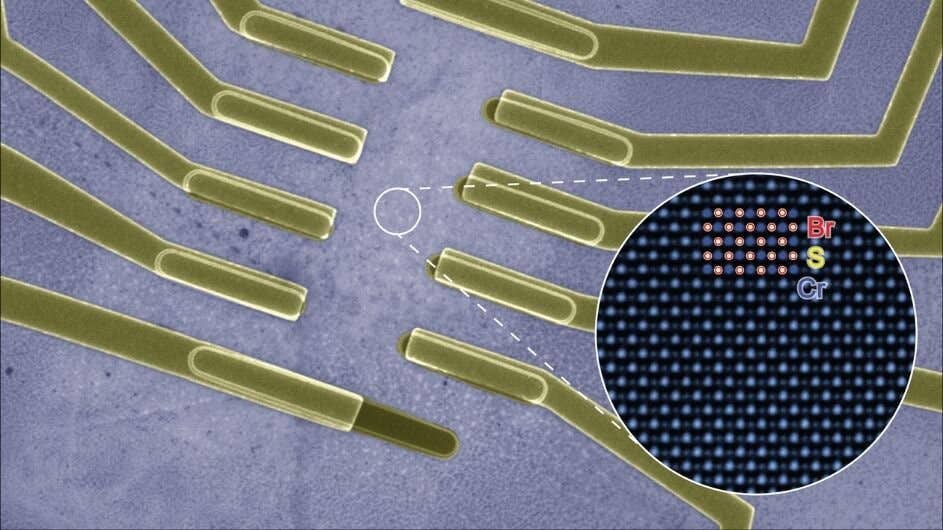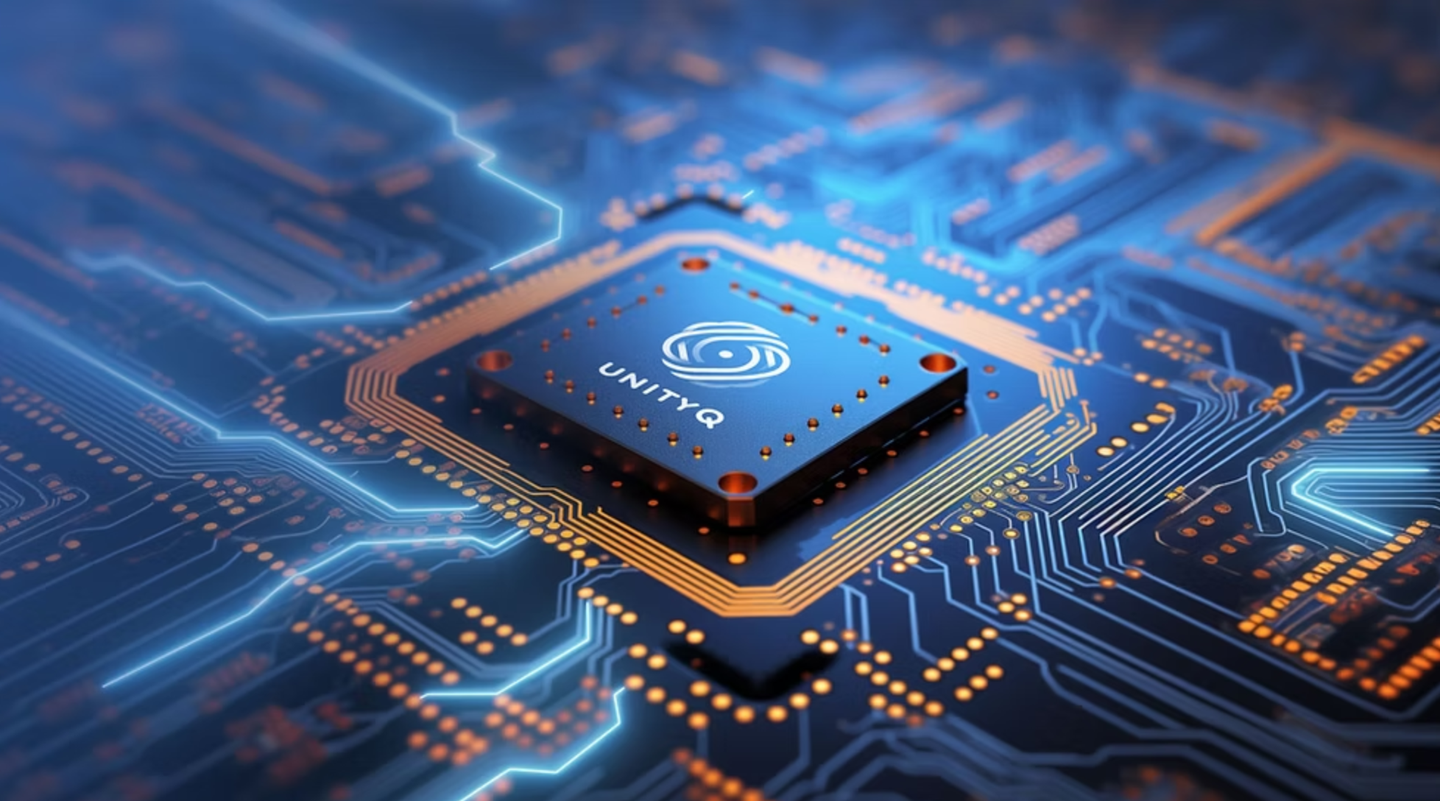Unique quantum material could enable ultra-powerful, compact computers
To shrink devices while improving their performance researchers are searching for unique materials that combine both quantum properties.

[May 22, 2022: Ellen Neff, Columbia University Quantum Initiative]
Chromium sulfide bromide crystallizes into thin layers that can be peeled apart and stacked to create nanoscale devices. Columbia researchers discovered that this material’s electronic and magnetic properties are linked together—a discovery that could enable fundamental research as well as potential applications in spintronics. (CREDIT: Myung-Geun Han and Yimei Zhu)
Information in computers is transmitted through semiconductors by the movement of electrons and stored in the direction of the electron spin in magnetic materials. To shrink devices while improving their performance—a goal of an emerging field called spin-electronics (“spintronics”)—researchers are searching for unique materials that combine both quantum properties. Writing in Nature Materials, a team of chemists and physicists at Columbia finds a strong link between electron transport and magnetism in a material called chromium sulfide bromide (CrSBr).
Created in the lab of Chemist Xavier Roy, CrSBr is a so-called van der Waals crystal that can be peeled into stackable, 2D layers that are just a few atoms thin. Unlike related materials that are quickly destroyed by oxygen and water, CrSBr crystals are stable at ambient conditions. These crystals also maintain their magnetic properties at the relatively high temperature of -280F, avoiding the need for expensive liquid helium cooled to a temperature of -450F.
“CrSBr is infinitely easier to work with than other 2D magnets, which lets us fabricate novel devices and test their properties,” said Evan Telford, a postdoc in the Roy lab who graduated with a PhD in physics from Columbia in 2020. Last year, colleagues Nathan Wilson and Xiaodong Xu at the University of Washington and Xiaoyang Zhu at Columbia found a link between magnetism and how CrSBr responds to light. In the current work, Telford led the effort to explore its electronic properties.
The team used an electric field to study CrSBr layers across different electron densities, magnetic fields, and temperatures—different parameters that can be adjusted to produce different effects in a material. As electronic properties in CrSBr changed, so did its magnetism.
Related Stories:
“Semiconductors have tunable electronic properties. Magnets have tunable spin configurations. In CrSBr, these two knobs are combined,” said Roy. “That makes CrSBr attractive for both fundamental research and for potential spintronics application.”
Magnetism is a difficult property to measure directly, particularly as the size of the material shrinks, explained Telford, but it’s easy to measure how electrons move with a parameter called resistance. In CrSBr, resistance can serve as a proxy for otherwise unobservable magnetic states. “That’s very powerful,” said Roy, especially as researchers look to one day build chips out of such 2D magnets, which could be used for quantum computing and to store massive amounts of data in a small space.
The link between the material’s electronic and magnetic properties was due to defects in the layers—for the team, a lucky break, said Telford. “People usually want the ‘cleanest’ material possible. Our crystals had defects, but without those, we wouldn’t have observed this coupling,” he said.
From here, the Roy lab is experimenting with ways to grow peelable van der Waals crystals with deliberate defects, to improve the ability to fine-tune the material’s properties. They are also exploring whether different combinations of elements could function at higher temperatures while still retaining those valuable combined properties.
Note: Materials provided above by Columbia University Quantum Initiative. Content may be edited for style and length.
Like these kind of feel good stories? Get the Brighter Side of News' newsletter.
Tags: #New_Innovations, #Quantum, #Computers, #Science, #Research, #Material_Science, #Technology, #The_Brighter_Side_of_News
Joseph Shavit
Head Science News Writer | Communicating Innovation & Discovery
Based in Los Angeles, Joseph Shavit is an accomplished science journalist, head science news writer and co-founder at The Brighter Side of News, where he translates cutting-edge discoveries into compelling stories for a broad audience. With a strong background spanning science, business, product management, media leadership, and entrepreneurship, Joseph brings a unique perspective to science communication. His expertise allows him to uncover the intersection of technological advancements and market potential, shedding light on how groundbreaking research evolves into transformative products and industries.



